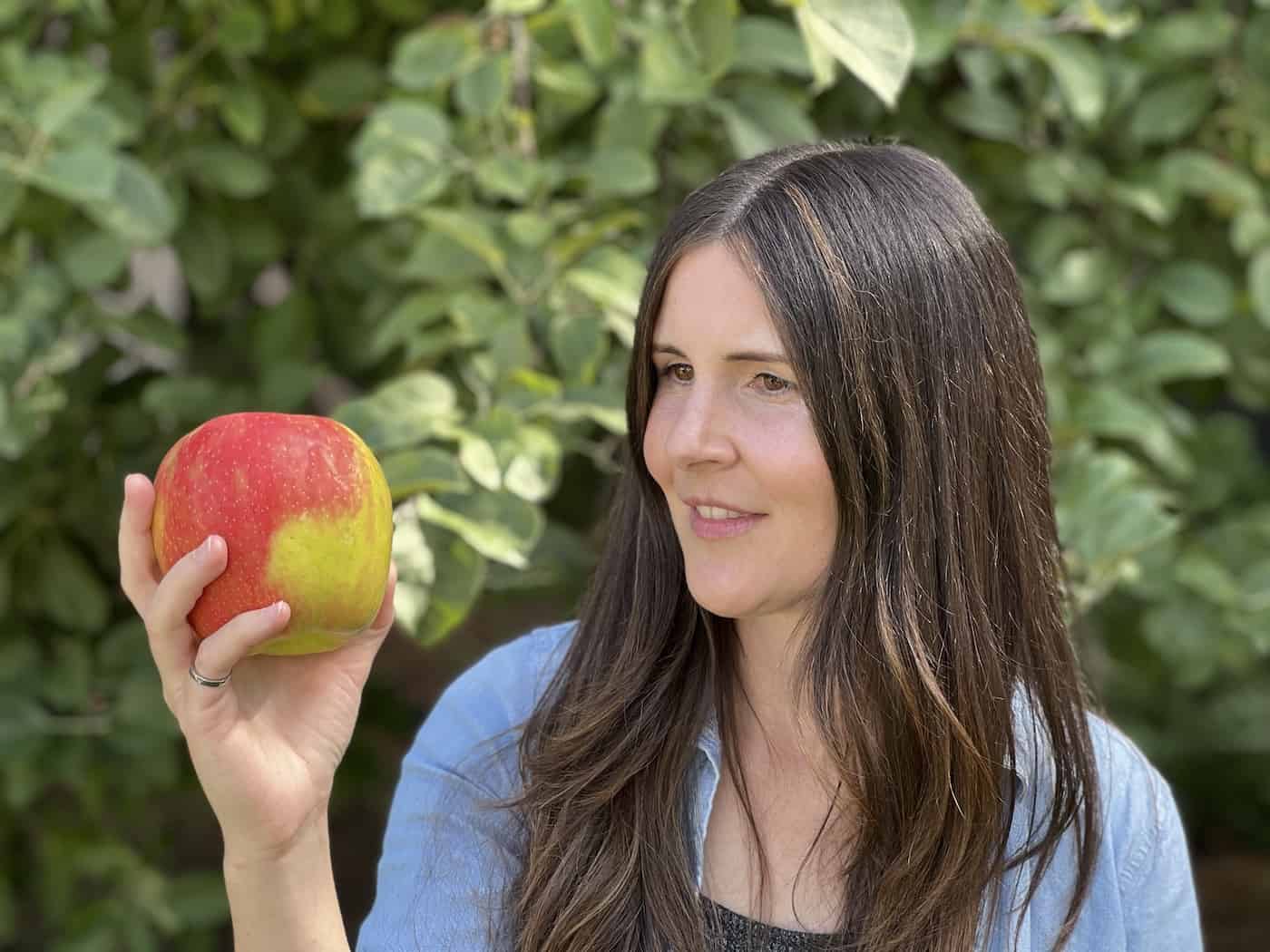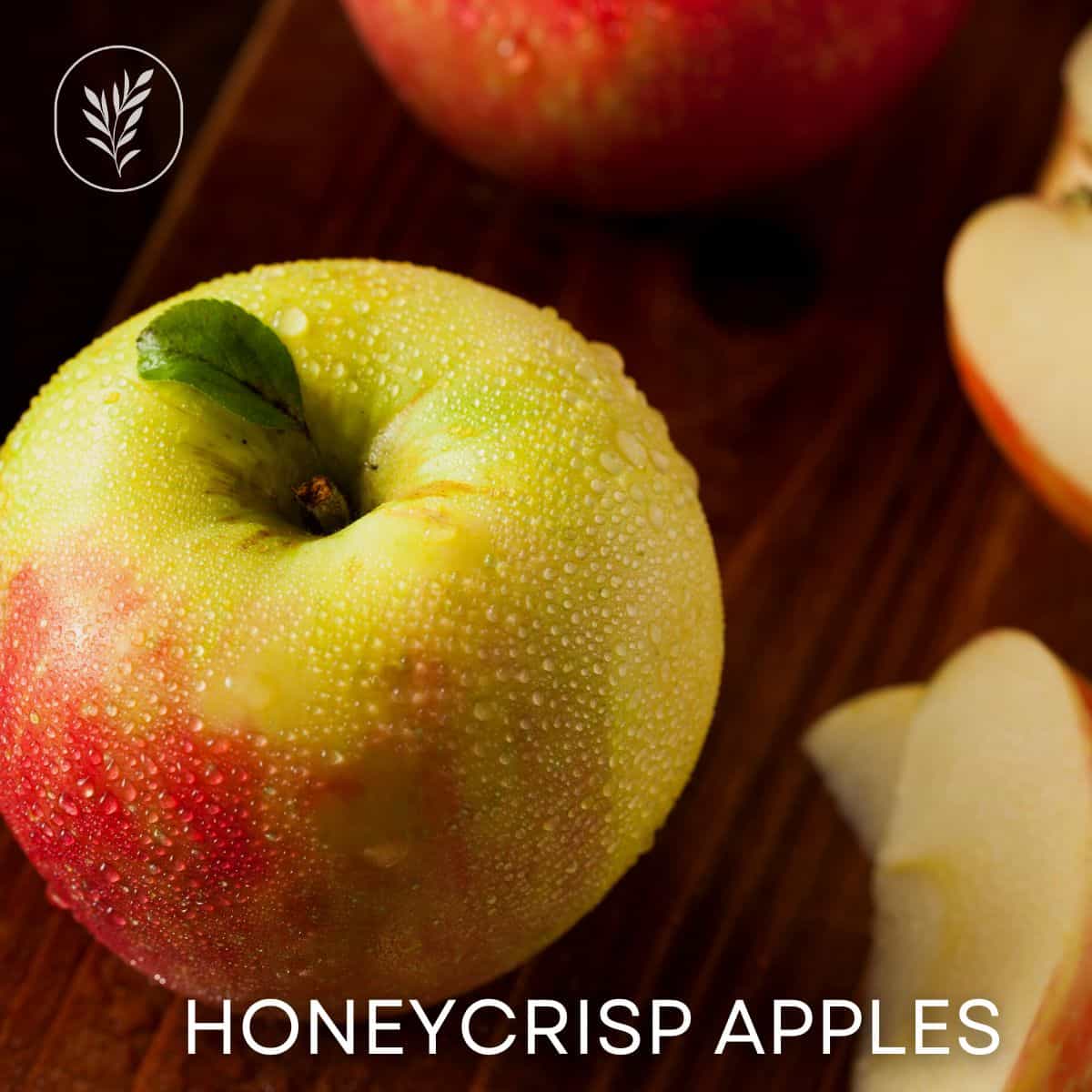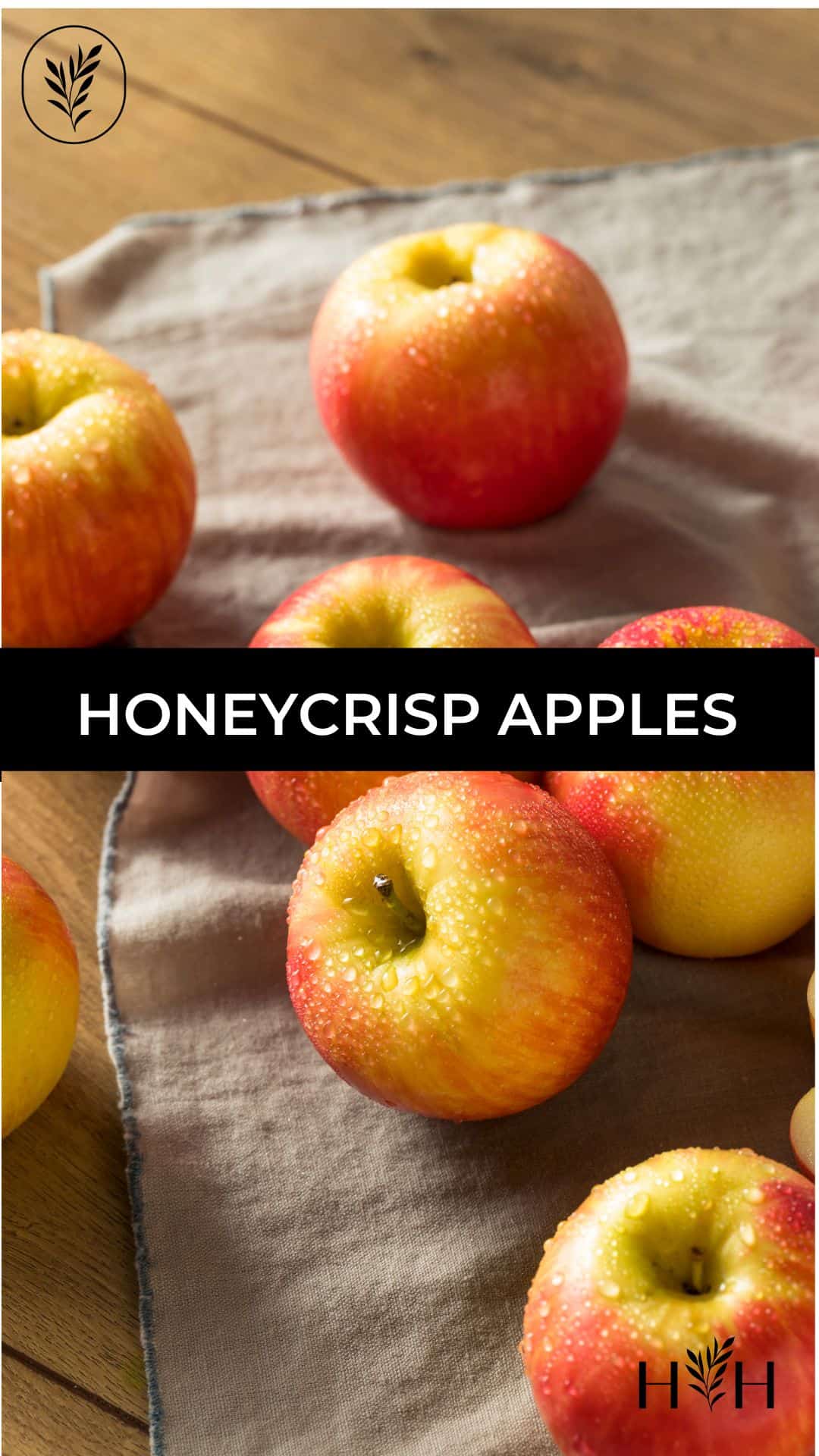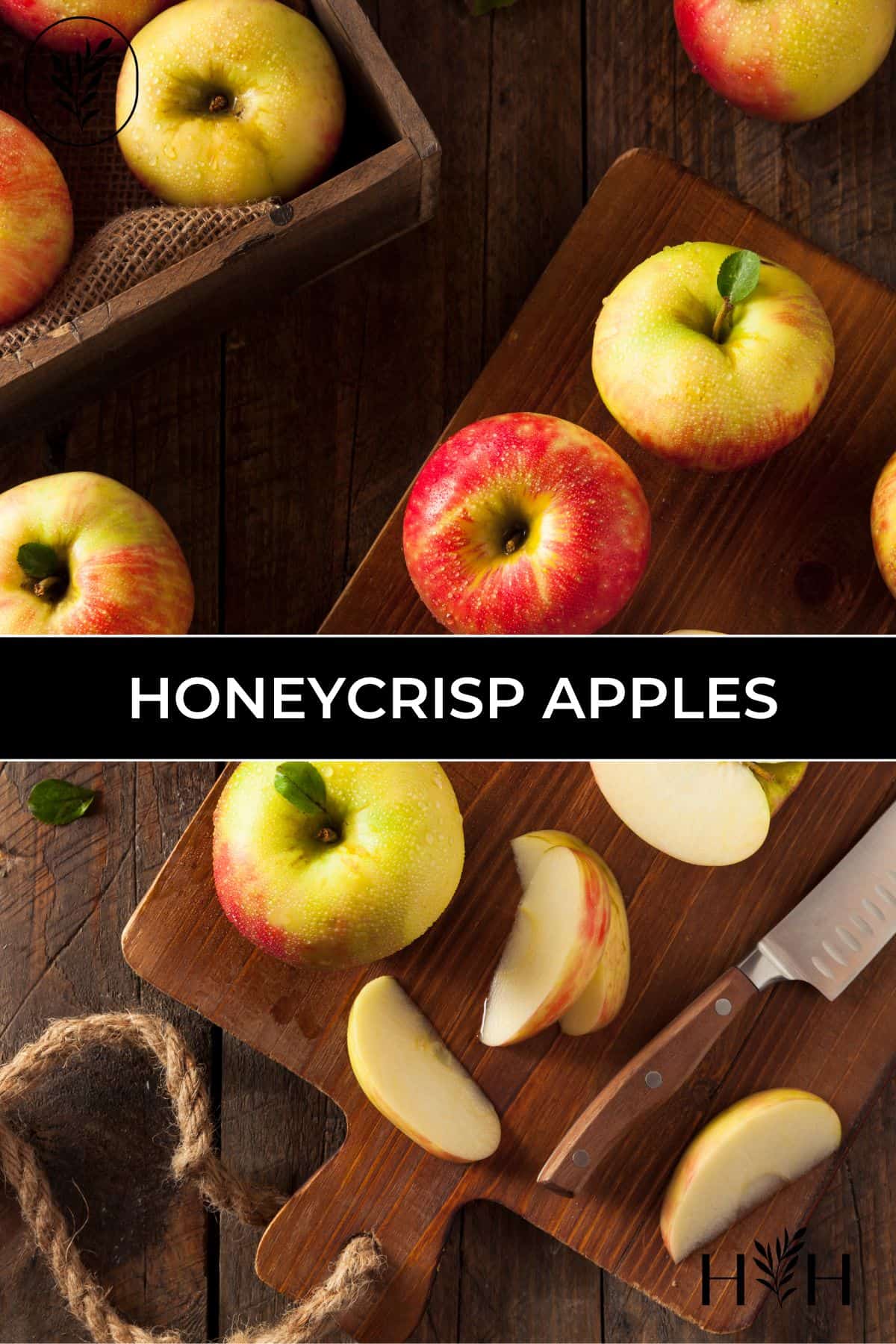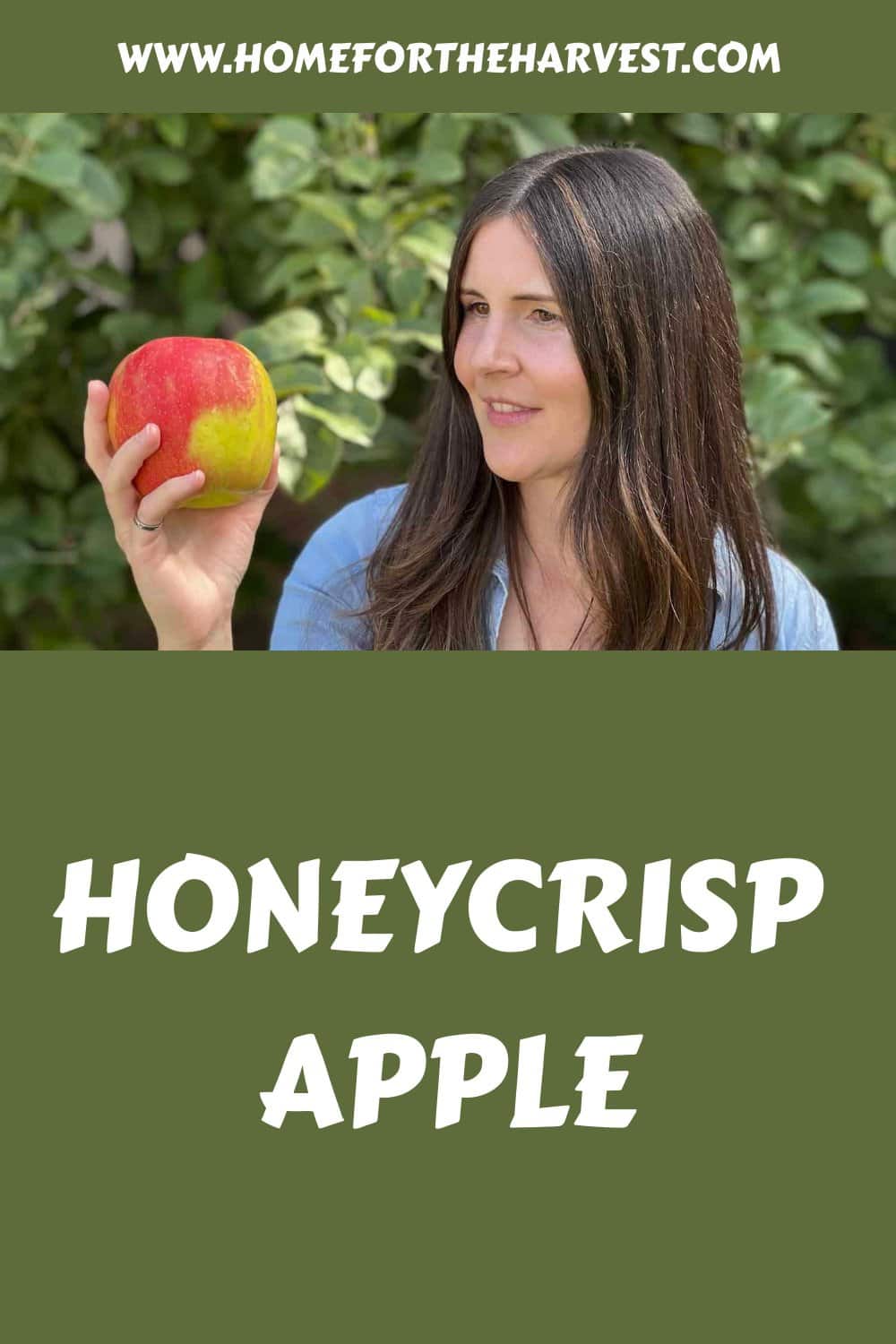Honeycrisp apples are a gourmet apple variety bred in Minnesota for an exceptionally fresh taste and totally unique texture. Honeycrisp apples are known for their juicy, crisp texture and well-balanced taste of sweetness and acidity. They have a rich golden-yellow background color and a vibrant red blush on the peel. Honeycrisp is among the largest, most expensive, and most desirable apples for fresh eating during apple season.
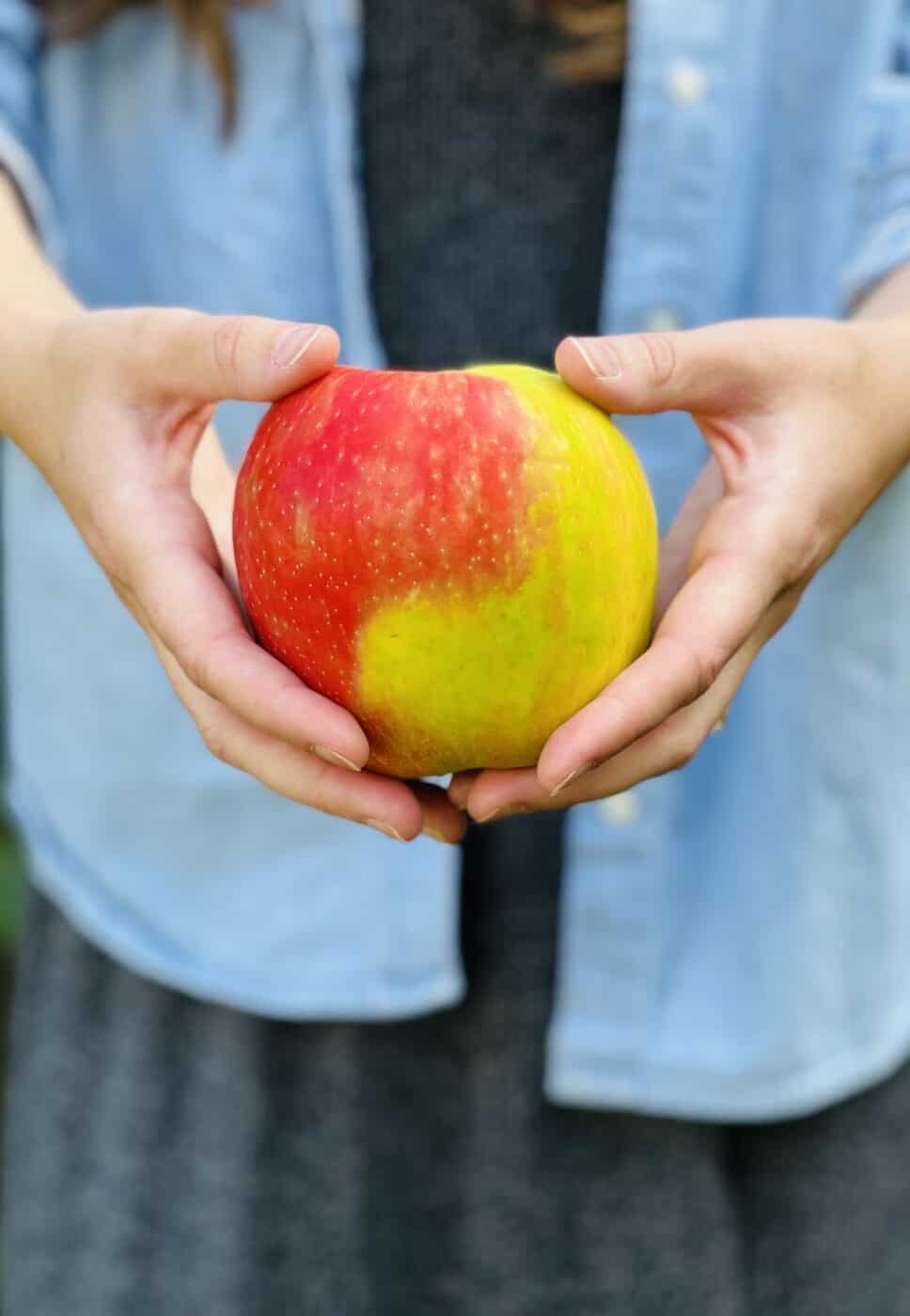
Origin of Honeycrisp apples
The Honeycrisp Apple was bred by the University of Minnesota (United States) as part of its cold-hardy apple tree breeding program. Though developed several decades earlier in the 1960s, the Honeycrisp Apple was released to the market in 1991. Fifteen years later, this type of apple was designated as Minnesota’s official state fruit!
Honeycrisp Apples were bred by natural cross-pollination of existing varieties. The specific origins of the Honeycrisp Apple (Minnesota #1711R) are not entirely clear, although the University of Minnesota has provided the following lineage summary of parent trees:
“Origin: Keepsake; (MN447 x Northern Spy) x unknown”
Apple Varieties: Honeycrisp, Minnesota Agricultural Experiment Station, University of Minnesota.
It was originally thought that Honeycrisp Apples were bred from the Macoun Apple and the Honeygold Apple, but genetic testing showed that the Keepsake Apple was a likely parent. Honeycrisp Apples are not genetically modified (GMO).
Honeycrisp apple flavor
Honeycrisp Apples are best known for their excellent balanced sweet-tart flavor that’s delivered with a wonderful burst of juicy crunch. The “explosively crisp” texture of Honeycrisp Apples is a unique trait that enhances the nice mix of honey-like tropical sweetness and acidic tartness. This relatively new apple is now the favorite of kids, chefs, and foodies alike, and is consistently ranked as one of the best-tasting apple varieties.
“When you bite into a Honeycrisp, one perfect, bite-size chunk cleaves effortlessly into your mouth with a snap. Sweet juice sprays across your taste buds – an effect of the exceptionally large and turgid cells, which pop like caviar.”
Apples Of Uncommon Character: 123 Heirlooms, Modern Classics, & Little-Known Wonders, by Rowan Jacobsen
Appearance of Honeycrisp apples
Honeycrisp Apples are typically large, attractive fruits. The peel tends to have a bright yellow background, partially covered by a vibrant red blush. Red portions of the apple are often streaked in vertical stripes down the sides of the apple. The amount of the apple that is red increases with sun exposure during crisp fall days.
Harvest season for Honeycrisp apples
Honeycrisp Apples typically ripen in mid-September. The apples are picked once the fruits have grown to their desired size, and the skin has developed a bit of red blush tone. For optimal ripeness, the apple should still have some visible green (try to harvest them before all the green has turned yellow). When ripe, Honeycrisp Apples will pop right off the tree when flipped upside down (eye-to-the-sky). The flavor of over-ripe Honeycrisp apples can decline quickly.
Honeycrisp Apple season starts with harvest, which occurs throughout the month of September. The apples on a given tree ripen over the course of 2-3 weeks rather than all at once. Honeycrisp Apples typically have the best fresh flavor within three months of harvest, which extends the Honeycrisp season to December in many climates.
Tips for buying Honeycrisp apples
Honeycrisp Apples can be purchased at supermarkets and specialty grocers. While this specialty variety used to be limited to boutique orchards, Honeycrisps can now be found at most grocery stores. They can also be found in apple-growing areas at local farmers’ markets and roadside fruit stands. Honeycrisps solid in Europe are often labeled as “Honeycrunch” apples.
When buying Honeycrisp Apples, look for large, uniform fruits free from bruising or other damage. These bi-colored apples have the best flavor when a portion of the apple is red, but the skin’s lightest parts have not yet turned yellow. There should still be some green skin visible at optimum maturity.
Honeycrisp Apples are large, ranging from 2″–3½” (7–9 cm) in diameter. A ripe Honeycrisp Apple generally weighs about 10-12 ounces, or 0.6-0.75 pounds (275-340 grams). There are less than two whole Honeycrisp Apples per pound. A ten-pound bag of Honeycrisp Apples is likely to contain about 12-15 apples.
Honeycrisp Apples often cost $4 per pound. Individual apples are sometimes sold at coffee shops and take-out delis for about $2-$3 each. Honeycrisp Apples are perhaps the most expensive apple variety.
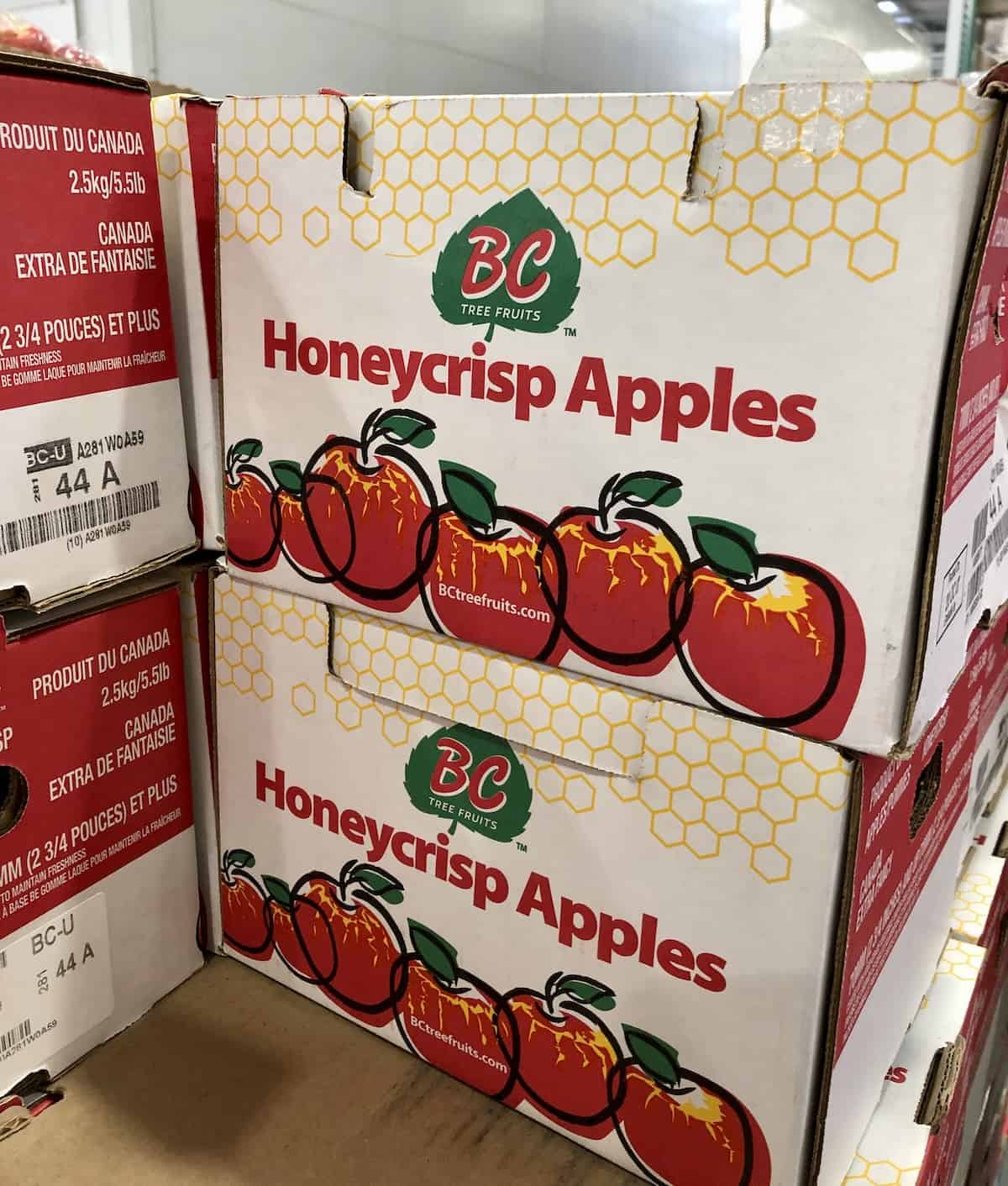
Why are Honeycrisp apples expensive?
Honeycrisp Apples cost at least twice as much per pound as more widely available varieties. Since the fruits are also larger than most varieties, a single apple may cost 4x as much as another (smaller) type! A Honeycrisp Apple may cost $3 at the same store that prices an individual Royal Gala apple at 75 cents.
So why are Honeycrisp Apples so expensive? Honeycrisp Apples are more expensive than other varieties because they are considered exceptionally tasty, yet are not widely available. These extra-juicy fruits require a very specific growing climate, as well as special care during harvest, transport, and storage. The additional investment required of orchardists to grow and handle the Honeycrisp cultivar has led to a scarcity in the market and an associated premium price.
“Millions of ‘Honeycrisp’ apple trees have been sold. And their crops have sold at a premium price. For orchards, farm markets and retailers this is great because it improves profit margins. And consumers benefit, too, because they recognize that this great tasting apple is well worth the price.”
Apple Varieties: Honeycrisp, Minnesota Agricultural Experiment Station, University of Minnesota.
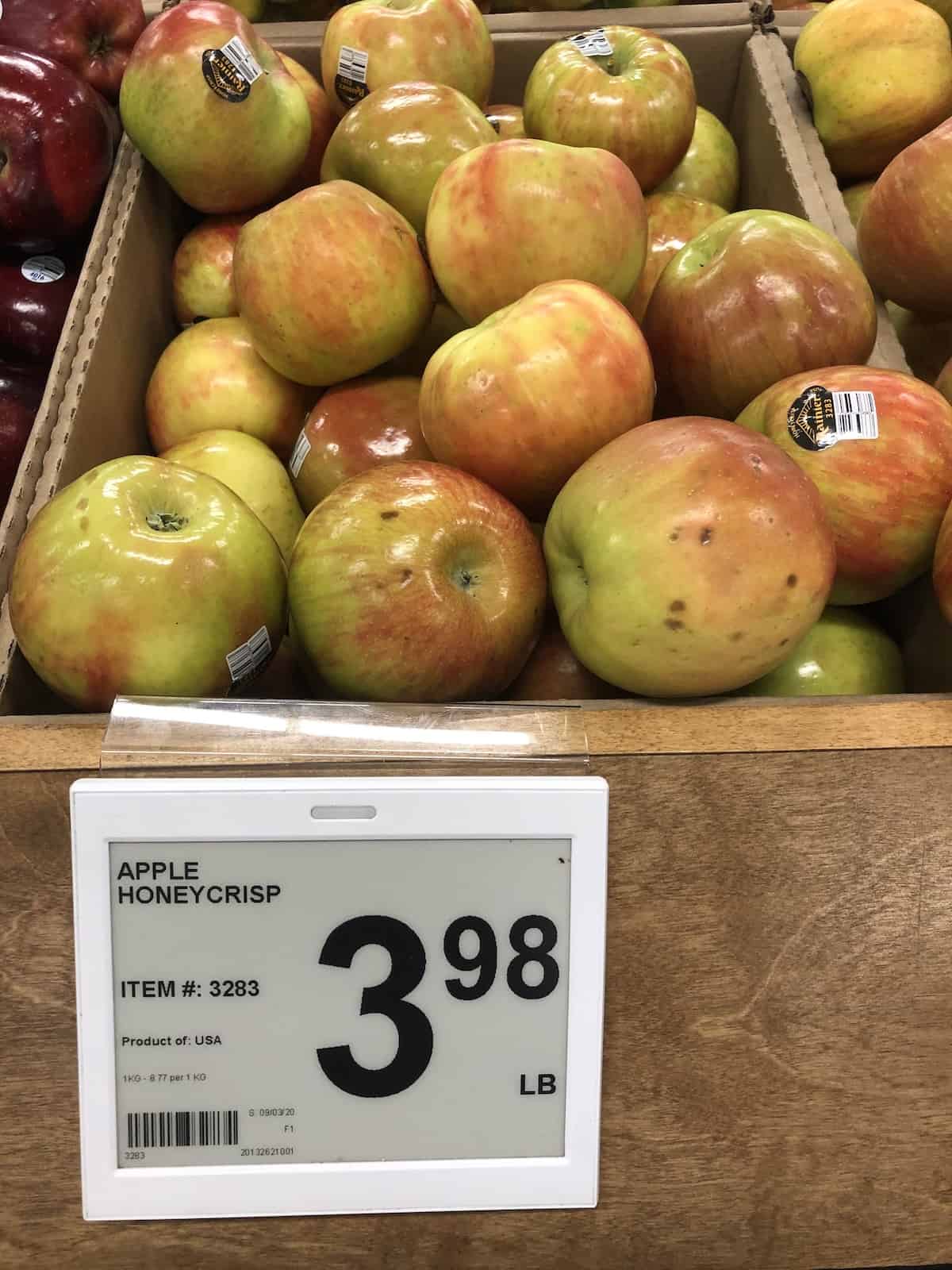
The Honeycrisp Apple variety is difficult to grow, requiring a climate with hot, sunny summers that let the trees produce large fruit. The winters must be cold enough to provide adequate chilling hours but not so cold that late frosts will destroy fruit blossoms. Orchardists often use advanced pest detection methods, expensive fertilizers, and growers’ accessories like netting over the trees to protect the fruits.
Honeycrisp Apples do store well, but only when harvested at optimum maturity. Even then, they are easily bruised and, therefore, tricky to handle and transport properly. Farmers must take special care when handling Honeycrisps in comparison to hardier conventional varieties. Fortunately, Honeycrisp Apples keep their flavor well in storage.
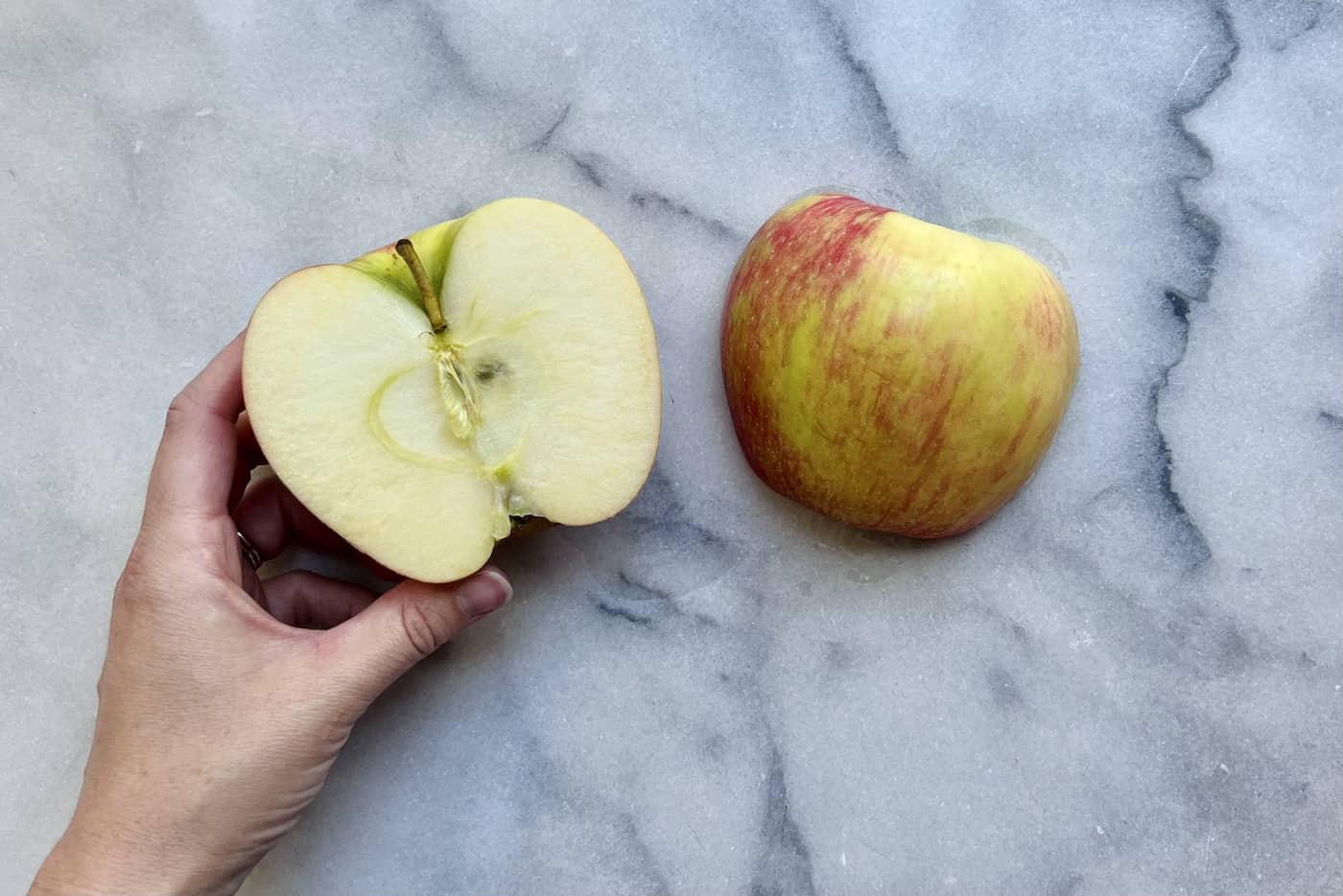
Where Honeycrisp apples are grown
Given the specific climate requirements, Honeycrisp Apples are best grown in areas with hot, sunny summers and cold winters. These are typically regions with a true 4-season annual cycle, with summer beach days and snow-covered wintertime. These trees have excellent cold hardiness due to their breeding program in Minnesota.
The major regions for growing Honeycrisp Apples are:
- Minnesota
- Michigan
- Wisconsin
- New England
- New York
- British Columbia
- Nova Scotia
- Quebec
- Ontario
- New Zealand
- Australia
- South Africa
“Developed in Minnesota, this winter hardy, high-quality apple is difficult to produce outside of cooler regions and the celebrated flavor and crispness will be lost.”
Apples of North America: Exceptional Varieties for Gardeners, Growers, and Cooks, by Tom Burford
How to grow Honeycrisp apples
You can grow your own Honeycrisp Apples by finding a healthy, certified, and licensed tree at a local nursery. If this variety isn’t available locally, order a tree from a specialty nursery. These trees are cold-hardy down to Zone 4, meaning they can survive temperatures down to -30°F (-34°C).
To produce fruit a single tree will need a pollinator partner – an apple tree of a different variety that flowers at the same time. Common pollination varieties include McIntosh, Gala, and Golden Delicious (crabapples and wild seedling trees growing in the lane also count!).
Plant your Honeycrisp tree in a sunny spot where it will get 6-8 hours of direct sunlight daily. Dig a wide hole for the tree that’s only as deep as the soil in the planter pot. Carefully place the tree in the hole and backfill gently with soil. Water the tree deeply immediately after planting. Mulch the soil around the tree with a 1″-thick layer of homemade compost (be sure not to let the compost actually touch the trunk of the tree).
Most apple trees sold at nurseries are grafted onto a dwarf root system and don’t get as big as they would if they had their natural roots. These backyard-sized trees likely will not grow any apples for 2-3 years after planting. Remove any apples that do appear so that the tree can focus on getting its roots, trunk, and main branches well established. Read more in this article about how long it takes for an apple tree to grow.
“Grafting is common because it can take five to 12 years until a tree grown from seed is ready to produce fruit – and even then, the chances of the “seedling” tree producing tasty fruit is minimal, due to genetic diversity.”
Growing Urban Orchards: How to Care for Fruit Trees in the City and Beyond, by Susan Poizner
Caring for Honeycrisp apple trees
Care for Honeycrisp trees starts with pruning in March. Remove vertical “water shoots”, remove any of the 4 D’s (dead, dying, diseased, damaged), and prune off any branches growing inward or crossing/rubbing other branches.
Honeycrisp trees bloom mid-late in the apple flowering season. Watch for late frosts during blossoming in May, and be prepared to thin the fruits in June and possibly into July. Thinning (removing some of the fruit) produces large fruits with improved flavor. A young Honeycrisp tree may have 50-100 apples on it that are left to grow after thinning. Harvest season starts in mid-September and lasts about 2 weeks (with a few stragglers into early October).
“Honeycrisp™ is protected under the U.S. Plant Patent Act (Plant Patent No. 7197). It may be propagated only by licensed parties. Firms or individuals desiring to propagate and sell trees of ‘Honeycrisp™’; must apply for a license from the University of Minnesota, Office of Patents and Licensing, Suite 201, 1100 Washington Ave. S., Minneapolis, MN”
Commercial Production of Honeycrisp Apples in Ontario, Dr. John A. Cline, Assistant Professor, Ontario Agriculture College, University of Guelph, Government of Ontario Fact Sheet.
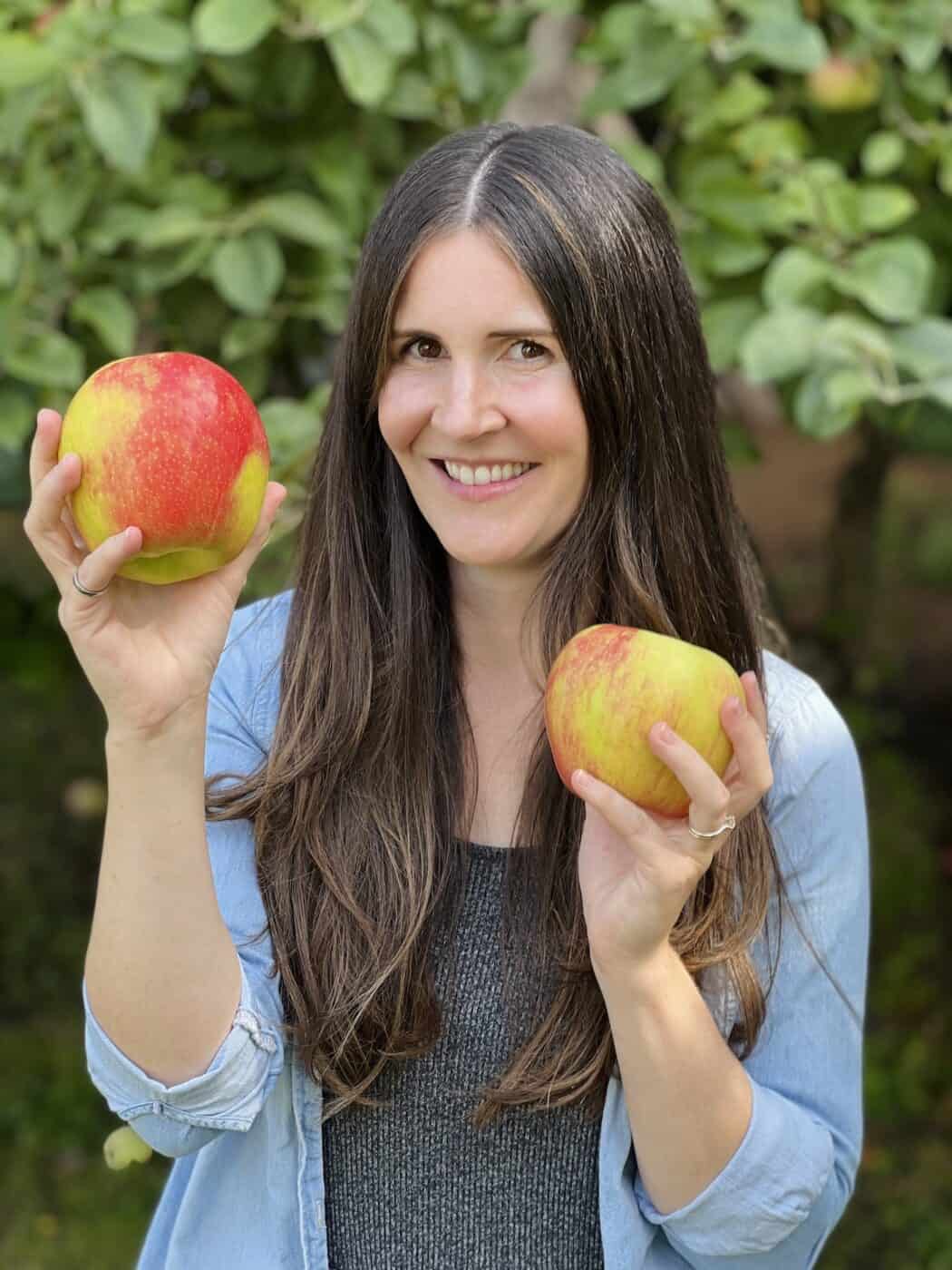
Storing ripe Honeycrisp apples
Honeycrisp apples are a reasonably good apple for long-term storage, provided they are picked at peak maturity and handled carefully to prevent bruising. Apples store best in cool conditions, typically between 34°-39°F (1°-4°C).
Honeycrisp apples can be stored in a dry cellar or cold room, or in the crisper drawer of a refrigerator. Try to keep them in a dark, cool space where the air isn’t overly dry or damp. Keep them away from bananas and tomatoes, which produce a gas that makes apples ripen more quickly. And most importantly, try not to bruise the apples (even a little bit).
While they do store well in general, these apples were not specifically bred for shelf-life, and are prone to storage rot and flavor deterioration. Commercial growers often treat Honeycrisp Apples with a fungicide to improve storage life. It can be difficult to find organically-grown Honeycrisps out of season.
Properly handled fresh fruits can be stored for 6-9 months in optimal conditions, extending the fresh produce availability into June of the following year. While local apples may not be available in July/August, grocers may try to bring in Honeycrisps from New Zealand to cover the local off-season. There is also a new offspring variety, called Cosmic Crisp, which supposedly can store for up to a year in the refrigerator.
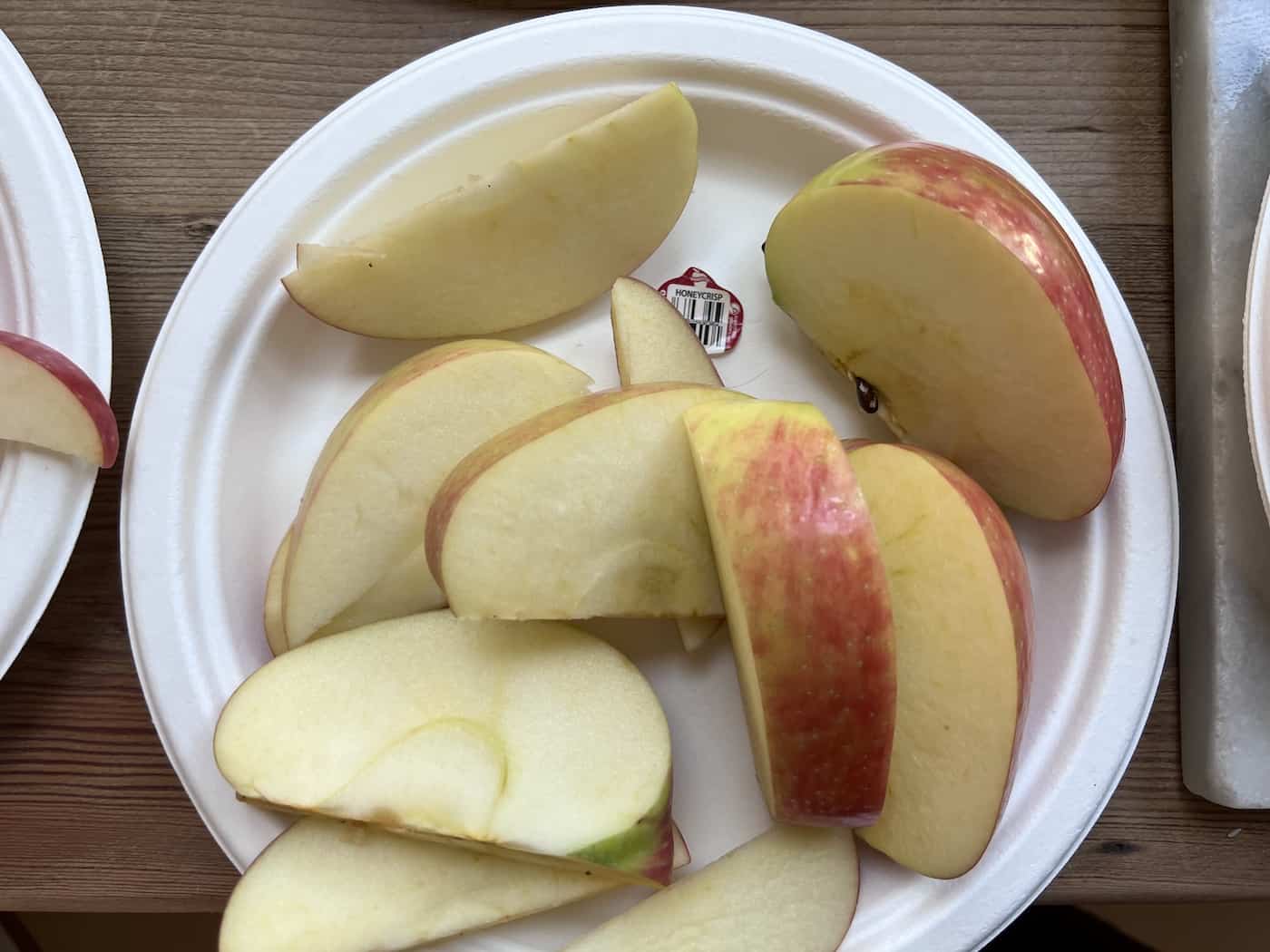
What to make with Honeycrisp apples
Honeycrisp Apples are best used to make recipes that feature fresh, flavorful, juicy apples. Celebrate the crisp flesh rather than cook it into mush. They have the added benefit of being slow to turn brown after being cut. Slice them up on a charcuterie board with some cheese, add them to a fresh fall salad, or dip them in your favorite nut butter!
Honeycrisp apple recipes
Here are some Honeycrisp Apple recipes:
- Apple Pecan Arugula Salad with Lemon Vinaigrette
- Fall Harvest Charcuterie Board
- Pioneer Woman Applesauce
Baking with Honeycrisp apples
Honeycrisp Apples are not particularly well-known for baking applications, as they are usually saved for fresh eating, along with other types of sweet apples. These apples were bred to be eaten fresh so that their crisp texture and firm flesh could be fully enjoyed. Golden Delicious, Braeburn, and Spartan are traditionally more common varieties for baking.
That being said, Honeycrisp Apples can be great for baking. The crisp texture of Honeycrisp does resist becoming mushy when baked, and it does have that excellent and unique flavor. They do taste different when warm in baking, and a true gourmet apple lover would delight in trying them in a baked dish. If you find them on sale during harvest, definitely save a few for a top-notch apple pie!
Substitutes for Honeycrisp apples in recipes
SweeTango Apples, Ambrosia Apples, Aurora, and Autumn Crisp apples all make a great substitute for Honeycrisp Apples in recipes that specifically call for Honeycrisp. Varieties like Gala Apples, Envy Apples, Jazz Apples, and Pink Lady Apples also make good substitutes.


